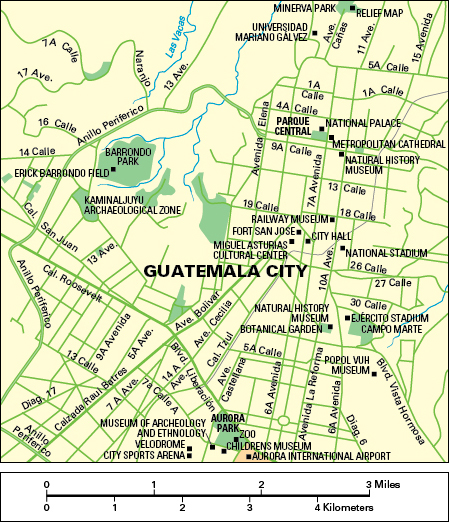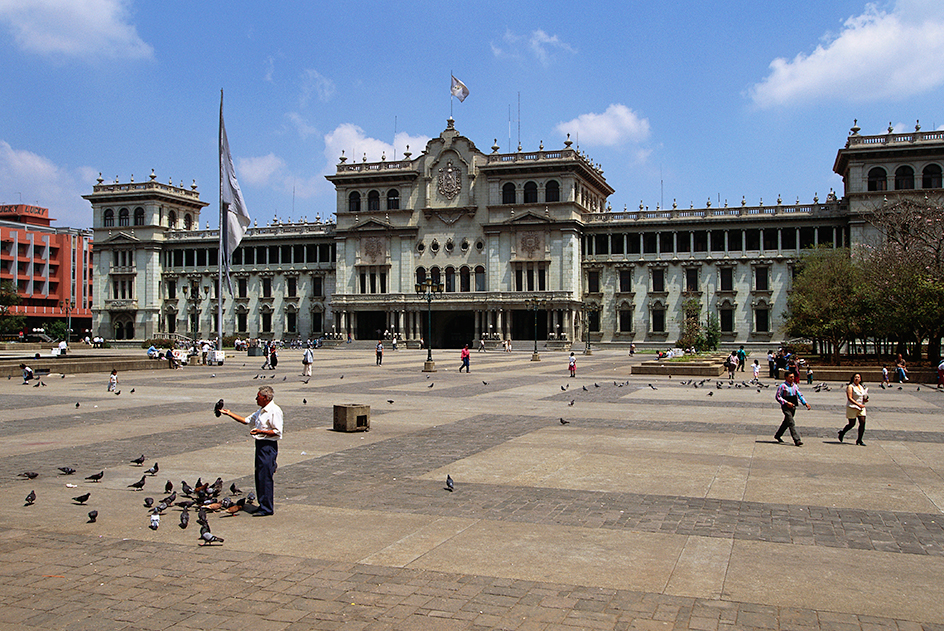Guatemala, << `gwah` tuh MAH luh, >> City (pop. 994,078) is the capital and largest city of Guatemala. The city lies on a plateau about 5,000 feet (1,500 meters) above sea level in south-central Guatemala. Its official name is La Nueva Guatemala de la Asunción. Locally and informally, it is called Guate.

Guatemala City’s downtown is in the northeast section of the city. It has broad avenues with modern hotels, office buildings, and shopping centers. The National Palace, the center of Guatemala’s government, faces a central plaza called Parque Central. Minerva Park, north of downtown, is known for its huge relief map of Guatemala. The concrete map, made to scale, covers about 2/3 acre (0.25 hectare). Aurora Park, in southern Guatemala City, is the site of several museums, a zoo, and a race track. Aurora International Airport is just east of this park. Guatemala City has a number of universities. The University of San Carlos, a public university founded in 1676, is one of the oldest universities in the Western Hemisphere.

Guatemala City is growing rapidly. The city faces problems of overcrowding, poverty, and crime. Many poor people have settled in ravines on the outskirts of the city. More than 3 million people live in Guatemala City and its surrounding areas. Guatemala City is one of the most violent cities in Latin America.
Guatemala City is the country’s chief manufacturing center. Its products include beverages, processed foods, and textiles. Retail trade and government also employ many people. The Central American Common Market has its headquarters in the city.
Guatemala City was founded in 1776 as the capital of the Spanish colony of Guatemala. In 1917 and 1918, earthquakes almost completely destroyed the city, which had to be rebuilt. An earthquake that struck Guatemala in 1976 caused more than 20,000 deaths and widespread damage to the outlying areas of Guatemala City.
